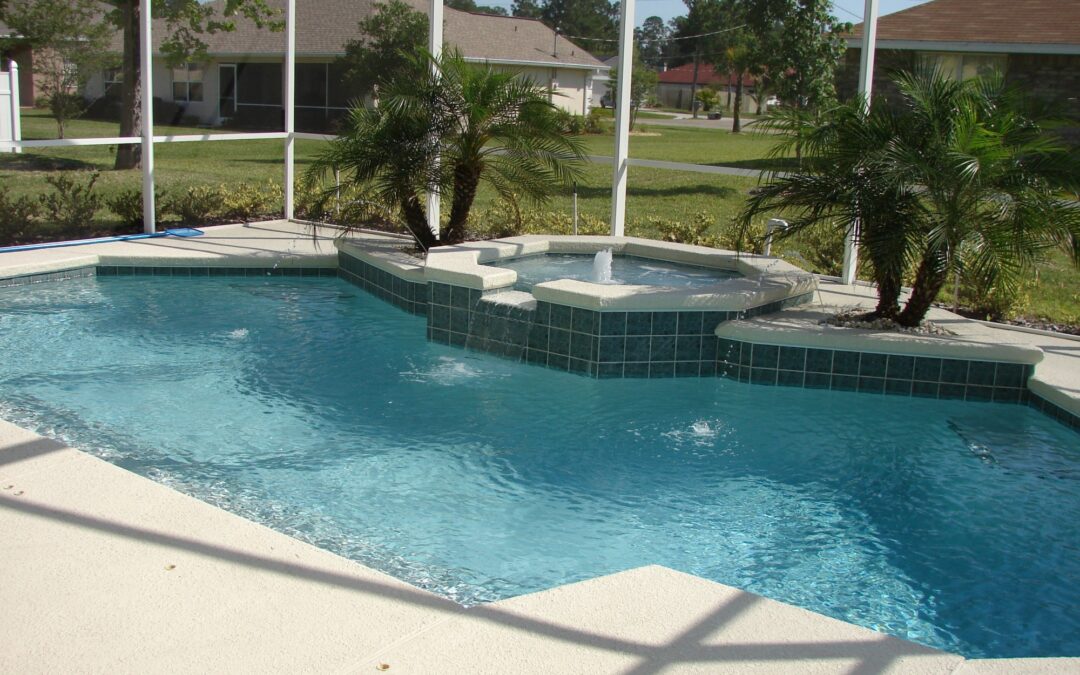In the US, there are 10.4 million residential pools and the number keeps climbing. Pools are a great way to keep cool in the summer and give everyone a place to gather, encouraging both exercise and relaxation — who wouldn’t want that?
But when building a pool, there is something to consider: what do you want the wall to be made of?
There are three main types of inground pool: vinyl, concrete, and fiberglass. Each has a different design implication, maintenance requirement, and cost, so it’s important to get to know each of them and make the best decision.
Here’s why your swimming pool wall material matters and what to know to help you make the best decision.
The Cost
With the swimming pool cost running between $35,000 and $60,000, installing any kind of inground pool isn’t going to be cheap. There are financing options available, thankfully, but you’re committing to a pretty huge amount of money and the kind of pool you choose is definitely going to affect this.
Concrete pools are by far the most expensive to build, so bear this in mind if you choose this material. Fiberglass and vinyl can both run a few thousand cheaper.
There are also maintenance costs to consider. Concrete pools almost need the most maintenance over the years, so it’s always worth getting an expert’s opinion before you commit to paying for something.
If you want to avoid an inground pool altogether and prefer above-ground pools, you can expect the cost to be significantly less.
The Maintenance Itself
Fiberglass pools are notoriously the easiest to maintain when it comes to building a pool. The material doesn’t affect the pH of the water so while you still need to test it frequently, you shouldn’t often have to correct the chemical balance.
Vinyl pools don’t need much maintenance in that sense either, but they have a different kind of maintenance. You’ll have to eventually replace the liner every few years, which can be a big added cost (or a pain in terms of labor).
Concrete pools need quite a bit of maintenance because the material affects the pH of the water. You’ll have to keep going in and correcting the balance, though the supplies to do so are easy to get. Hydrochloric acid can quickly right things.
You’ll also have to clean a concrete pool much more frequently. The reason for this is the algae that builds on the surface, as concrete gives it a good, rough place to cling to. Algae in the water will affect the chemical balance and suck the chlorine out, which can make the water irritating to swim in — and even dangerous for someone who might have respiratory diseases.
The Comfort
If you have small children, consider fiberglass for your pool. It’s smooth to walk on and much more comfortable than rough concrete, which those who are sensitive to texture might find irritating.
This is also important for those who might have sensitive skin.
Steps in a fiberglass pool can also be designed to have an anti-slip texture so you don’t need to worry about the dangers of stepping onto a smooth floor.
The Appearance
Despite the high cost and maintenance, there’s no doubt that a concrete pool is the one that looks the most sturdy and impressive — as long as it’s well-maintained, of course.
Fiberglass also looks smooth and sleek, whereas vinyl can look a little cheaper. If appearance is important to you, then a concrete pool is likely to be your best bet.
The Customization
Fiberglass is typically sold in pre-designed molds so you don’t get much of a say in customizing your pool. If that’s not important to you, however, this can still be the perfect option.
Vinyl pools are fairly customizable, not only in terms of the shape but you can even get a different color of liner to suit your yard and your mood.
However, when it comes to customization, nothing compares to concrete. When building a pool using concrete, you can completely choose the size and shape and how it’ll fit into your yard, making it the most popular option for those who might want a more unusual size or shape.
The Installation Time
Because fiberglass pools come predesigned, they’re likely to take the least amount of time to install. The contractors will dig the hole in your yard and make sure everything is set up, then they’ll deliver and insert the pool. If you’re in a rush to get your pool installed, this might be the way to go.
Vinyl pools take a little longer because of the metal frame and getting everything attached, but you still aren’t looking at a particularly long installation time.
Concrete pools will take the longest. If you’re willing to wait a few months, they could be the right option for you, but impatient people might struggle!
However, it’s important to remember that although concrete pools take the longest to install, they also last the longest. It pays off.
The Swimming Pool Wall Material Matters
When building a pool, the swimming pool wall material is crucial. That doesn’t mean there’s a right or wrong choice, though.
You need to look at all of the different things the material can affect and make a decision from there. Customization, durability, price, installation time, and appearance are all affected by the material you choose, so decide on what’s important to you.
Looking for a custom pool in Katy, Richmond, Cypress, Houston, and beyond? Contact us today for a free consultation and let’s see what we can do for you.




